| Year-round Resident |
American Goldfinches are common year-round residents in the Washington metro area. They visit bird feeders, and they especially like nyjer, sunflower, and thistle seed. They are common at Monticello Park, but they are not known to breed there. They start to breed later in the spring than most songbirds and have nested at Dyke Marsh.
Where to See Them in the Park
You can see American Goldfinches in any part of the park at any level in the trees. They often go into the stream to bathe and drink. They are vocal when flying, and their flight is undulating.
Physical Description
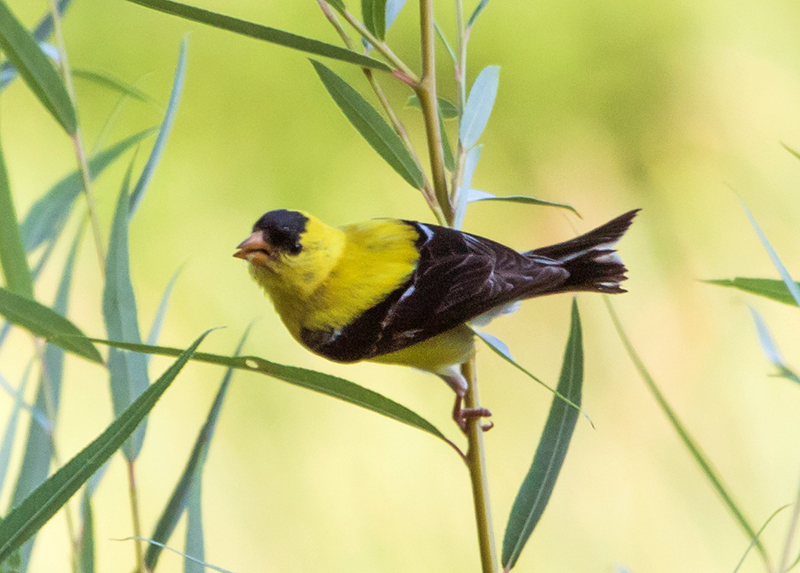
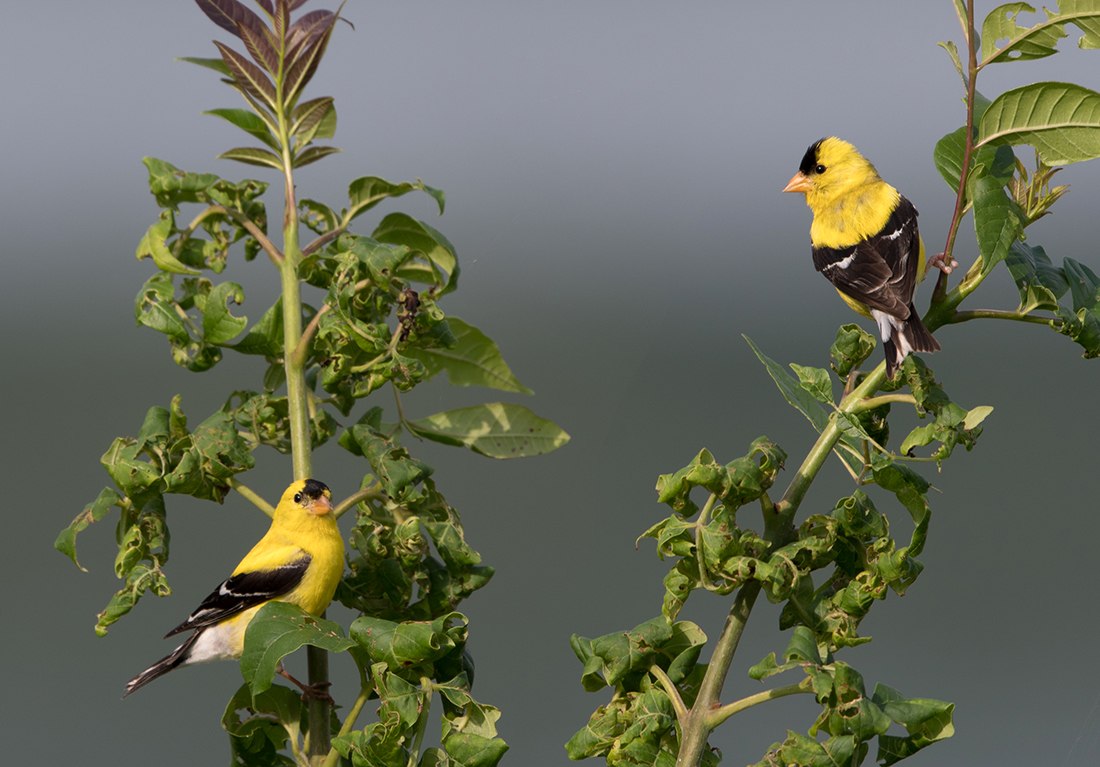
Male American Goldfinches are bright yellow with a black forehead, black wings, and a black tail. They have a pointed pink bill. Because of their bright yellow plumage, they are a favorite bird of many non-birders who have them in their yard. Goldfinches are roughly the same size as many species of warblers. Some birders at Monticello who are looking for warblers in the spring sometimes are disappointed when they see a flash of bright yellow which turns out to be a goldfinch.
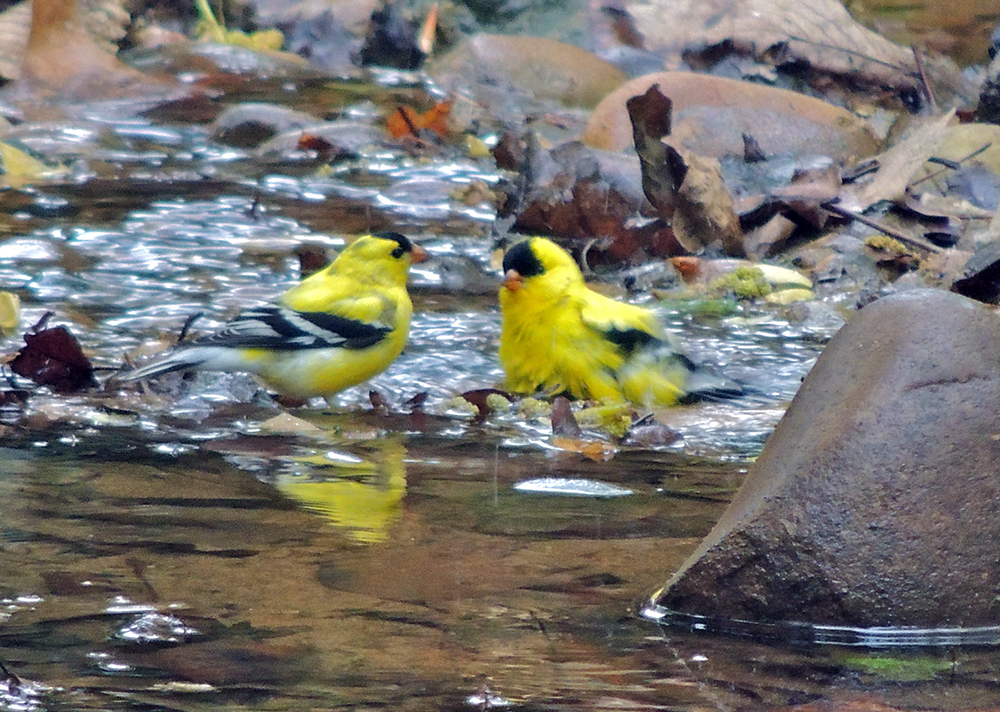
Goldfinches are gregarious birds, and sometimes two or more will bathe together. They often stay in the water for awhile and have a leisurely soak.
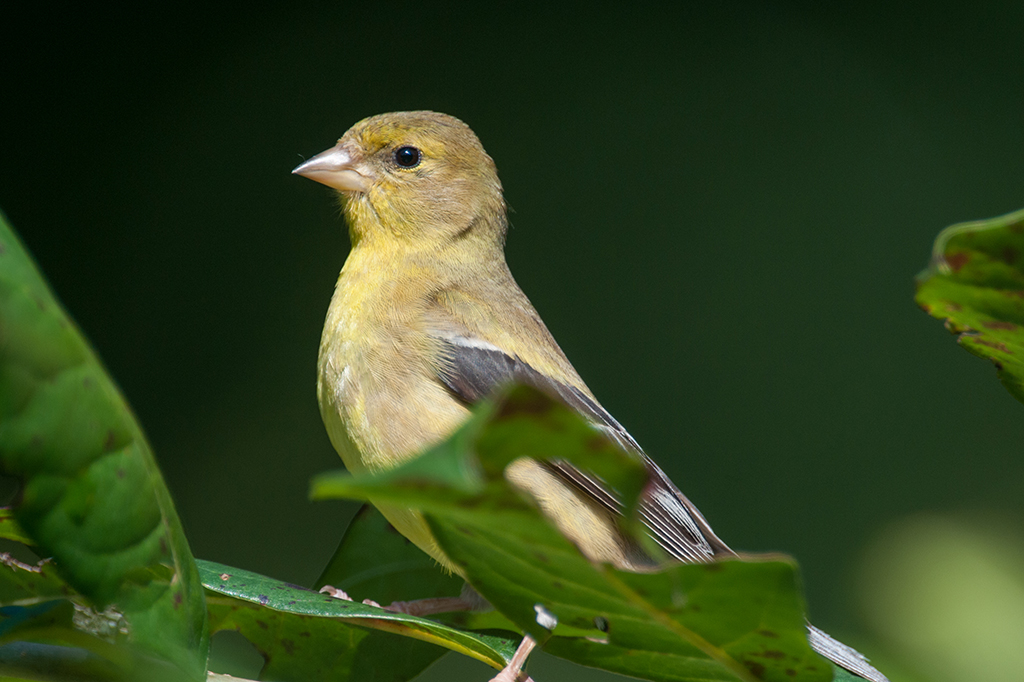
The female goldfinch is not bright yellow, but has a yellow wash below. Her head is yellow-olive, and her back is brown. She has an olive wash on her flanks. Her wings and tail are black, and she has two white wingbars.
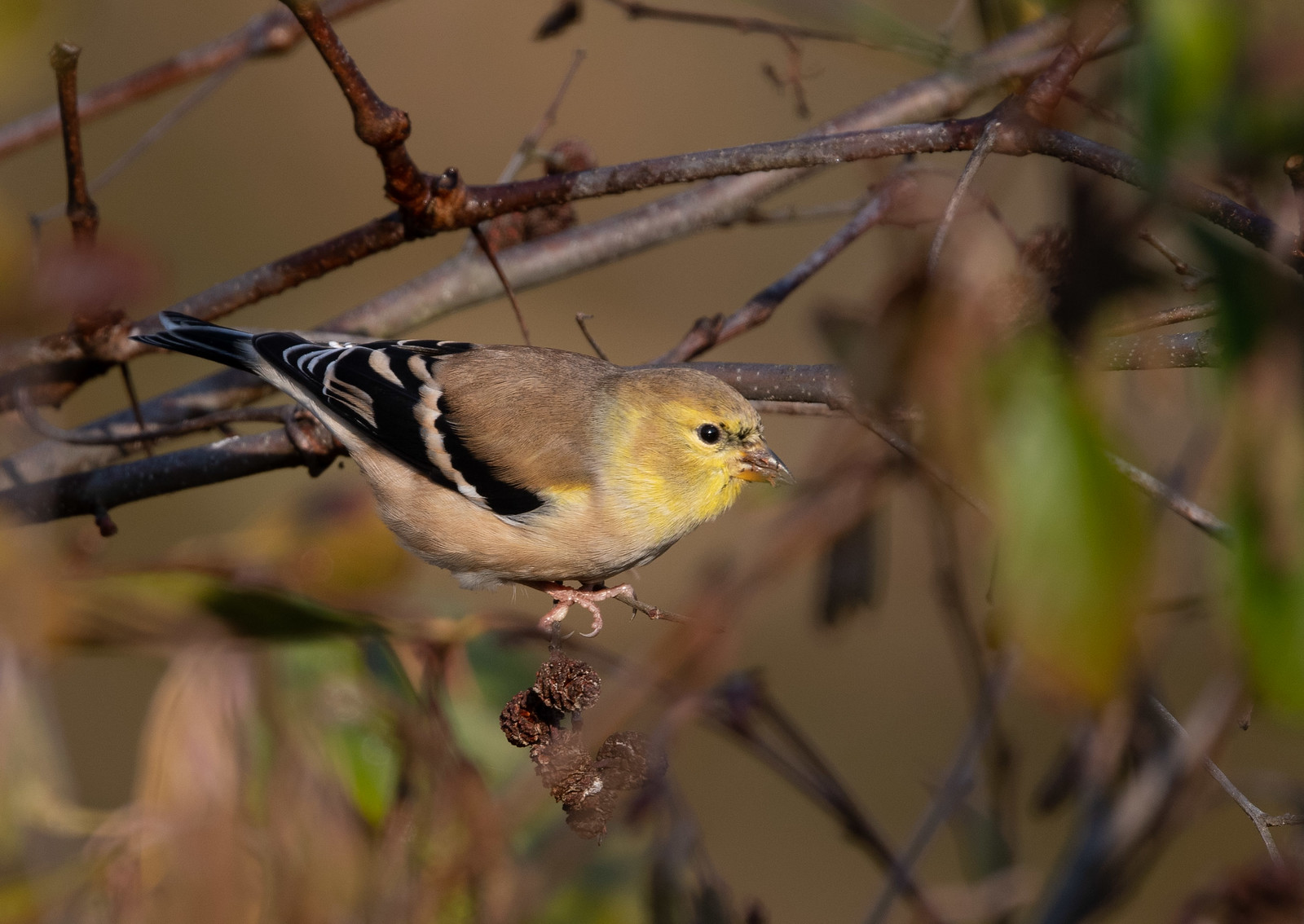
Fall/winter plumage males look like adult females, but have less yellow below. Male Goldfinches molt into their bright yellow plumage at the end of the winter and out of it at the end of the summer. They are the only species of finch in their subfamily who molts twice a year.
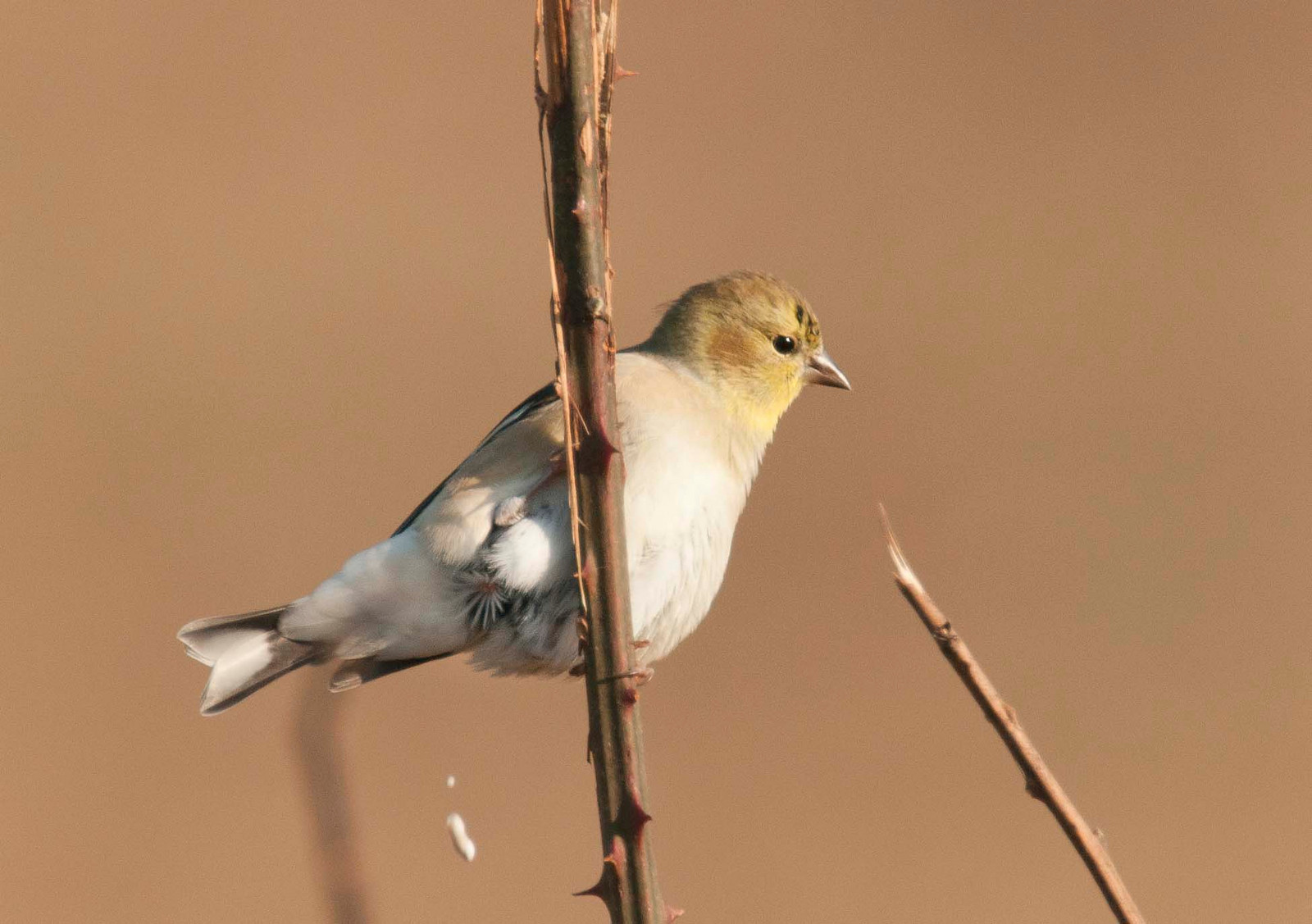
Fall/winter plumage females have less yellow below than adult females. Their plumage tends not to be as bright, but this can vary.
Vocalizations
The song of the American Goldfinch is a lively and high-pitched series of twittering notes that can last a long time. Goldfinches sing a lot, and learning to recognize the song can be useful when trying to sort out birds singing at Monticello. They have a variety of calls. A common one is a brief per-chick-o-ree, which to some people sounds like pot-ta-to-chip. The call is often heard from flying birds.
Hear the vocalizations of the American Goldfinch.Notes
The American Goldfinch is one of three goldfinch species in the United States. The other two — Lesser and Lawrence's Goldfinches — are found in the western states. Goldfinches are in the same genus as siskins. The goldfinch found in Europe, after whom all of the other goldfinches were named, is not nearly as golden. The European Goldfinch flashes yellow on its wings when it flies, but perched birds show yellow only in the wings. They are familiar birds to Europeans, and their population has suffered greatly because of the cage-bird trade. They figure heavily in Christian symbolism — they eat thistle seeds and were associated with the sadness and suffering of Jesus when he was wearing the crown of thorns. In 2014, a novel by Donna Tartt called The Goldfinch won the Pulitzer Prize for fiction. The novel is about a 13-year-old boy who is in a museum when a terrorist bomb explodes. He manages to salvage a small Dutch painting of a European Goldfinch from the wreckage.
Origin of Names
Common Names: American to distinguish them from the European Goldfinches. Gold from the plumage. Finch from the German fink, which sounds like the call of a finch.
Genus Name: Spinus means linnet, a small finch who eats flax seed, from which linen is made.
Species Name: Tristis means sad. They were named by Carl Linnaeus for their preference for thistle seeds and the association of the European Goldfinch with the crown of thorns worn by Jesus.
American Goldfinch video footage
Return to the Index
